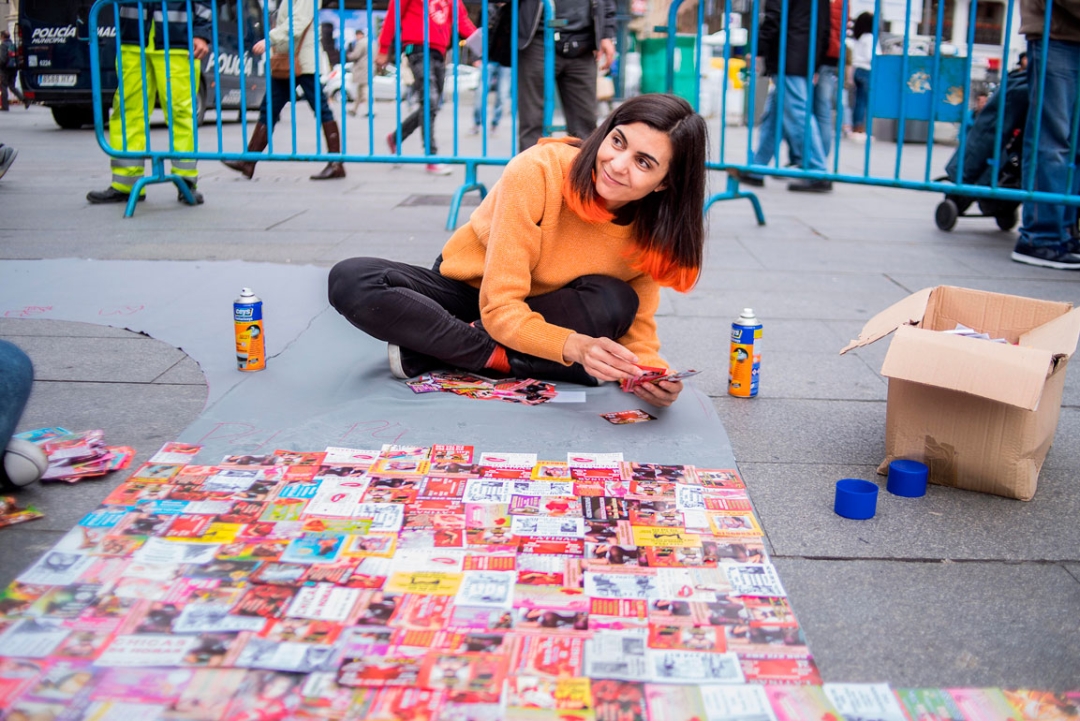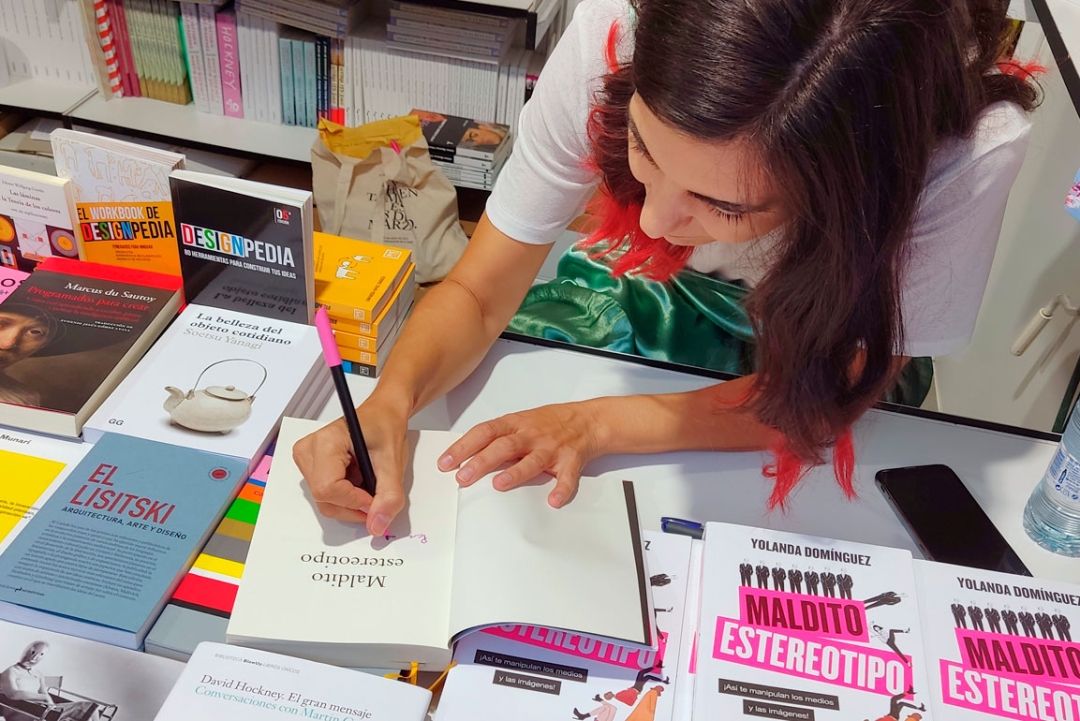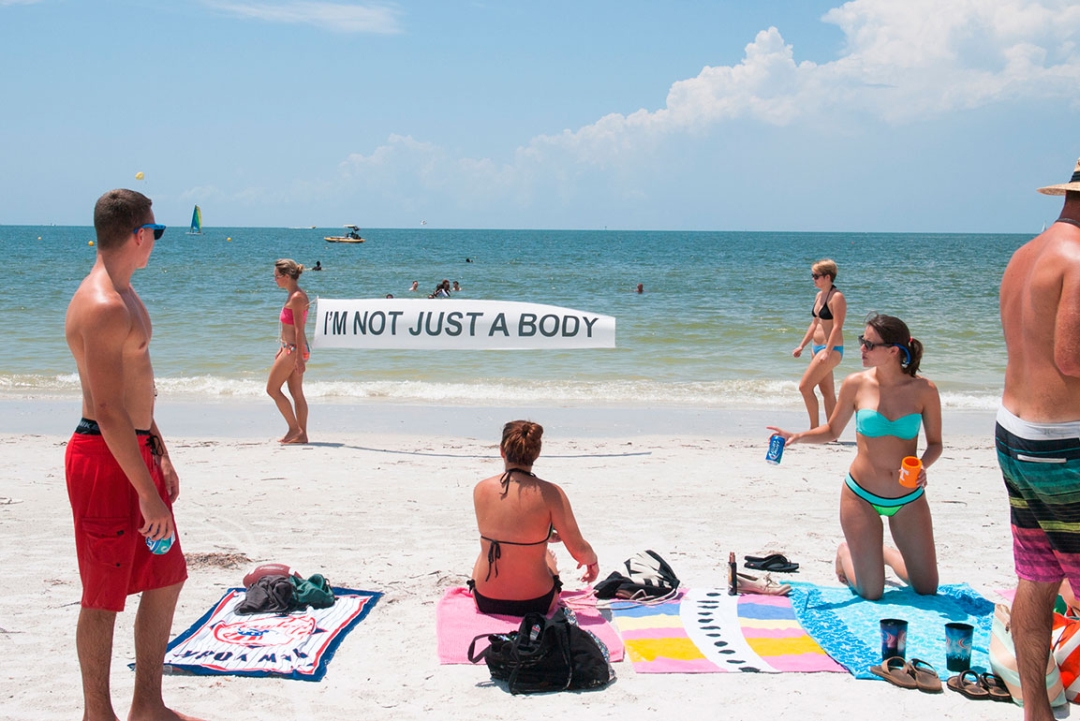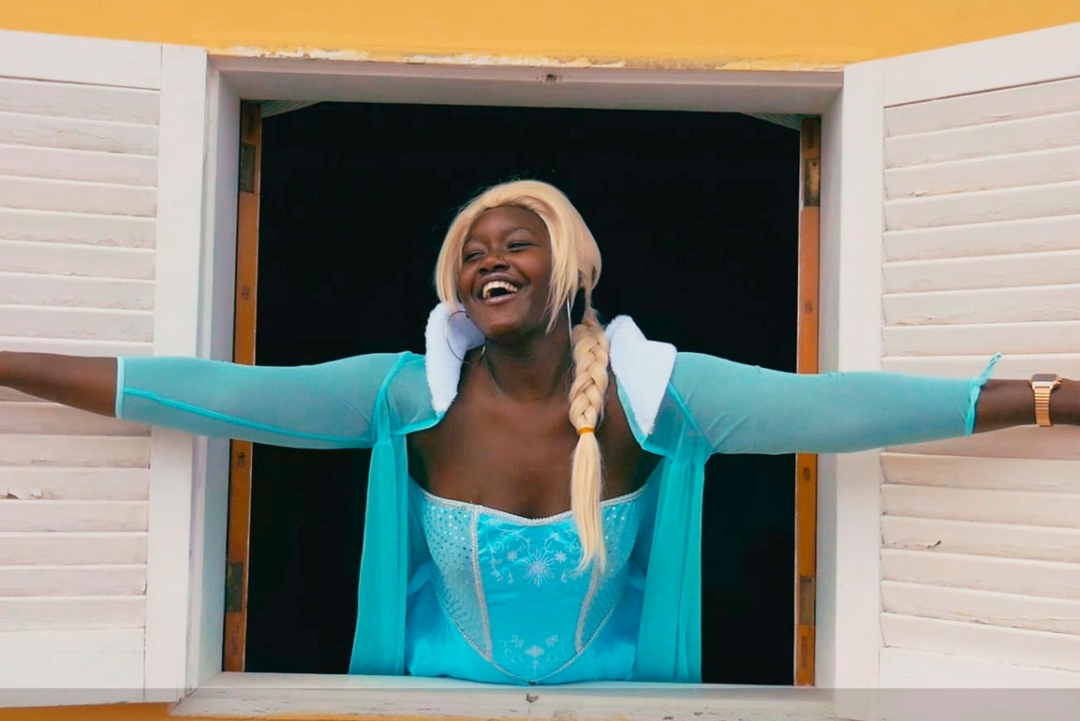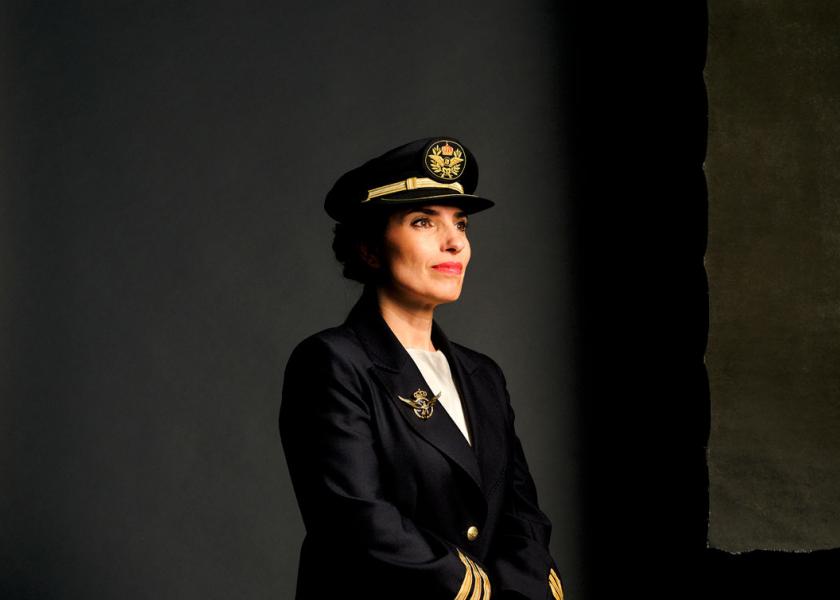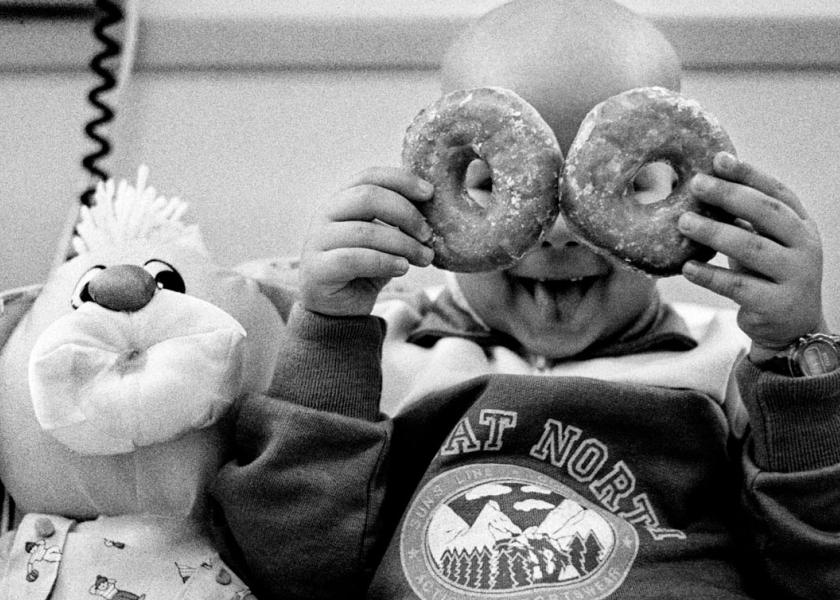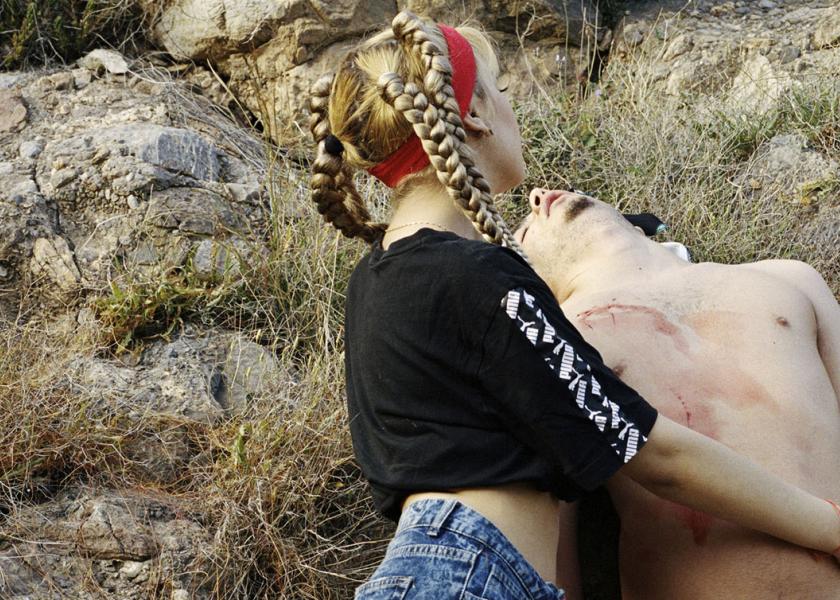Yolanda Domínguez
Visual activisim
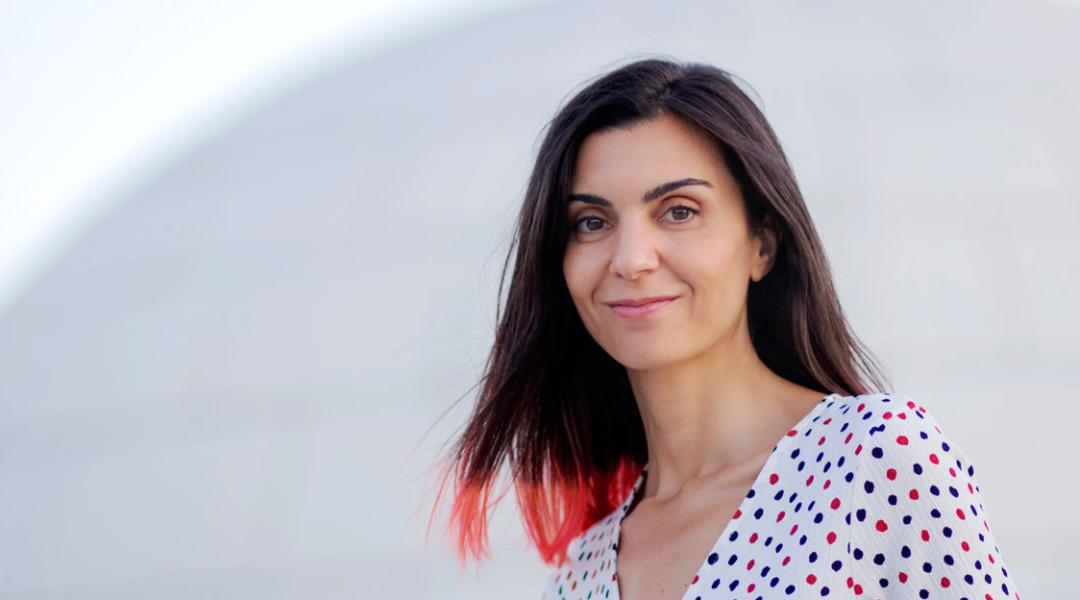
Visual artist Yolanda Domínguez has turned the fight against the objectification of women’s bodies into her hallmark. Because, even today, many advertising and audiovisual productions still treat women as objects. Through photography, video and “performance”, and always with a firm commitment to equality, she creates images that invite you to reflect on “damned” stereotypes.
Yolanda Domínguez (Madrid, 1977) is synonymous with communication for equality, feminist recognition, and social awareness. She’s spent more than a decade using photography to point out stereotypes that turn women into objects, especially in advertising. As a visual artist, she also uses video and performance to make counter-campaigns that condemn images that should but no longer shock us; like the unnatural —defeated, weak or submissive— poses of advertising photography models. She’s a member of the UNESCO Chair of Education for Social Justice of the Autonomous University of Madrid and splits her time between creative consulting work for businesses on equality and non-sexist communication and creating specific social awareness campaigns for government bodies. Her book Maldito estereotipo became a weapon to fight against stereotypes related to gender, age, race, or size, among others, so that they stop conditioning future generations.
When did you first come into contact with photography and art?
I always remember my father with a camera wherever we went, and he was also a painter, so we had many images on different media at home. First, I studied Business because my mother had a very pragmatic view of the world and told me to study something with a future. Cultural work has always been associated with certain instability. But, during my final year at university, I secretly signed up to the admission tests for Fine Arts, I passed and was able to study what I truly wanted... That’s where it all started.
And why did you replace canvas with photography?
After Fine Arts, I studied the Master’s in Art and New Technologies at Universidad Europea in Madrid and the Master’s in Photography at EFTI. I was looking for more contemporary forms of expression; canvas is very slow, and people identify it more with decoration than with narrative. I’ve always used art to reflect on what was happening to me.
“We cannot be what we cannot see: it’s not about censoring, but rather creating new male and female role models”
So, do all photos start with a reflection, with a question?
In my case, I’ve always asked myself lots of questions. For example: what effect does painting or photographing a woman a certain way have? Painting or taking a photograph in itself isn’t that important, but rather how I represent women and how certain scenes have an impact on me; in short, how what I do and what I see affects me.
Damned stereotypes, as you call them in your book, are one of your favourite subjects and are encouraged since childhood. You covered this topic in your Princesas 2.8 project. What was that creative process like?
With Princesas 2.8 I started with the foundation: I wanted to change the narrative of the princesses that were part of our early life experiences as girls. The action consisted of giving back that lesson because it no longer serves us; so, I showed Snow White selling garden dwarfs and apples, or Ariel the mermaid selling legs inside a paddling pool. Today, I collaborate as an equality communication consultant with companies like Disney, providing training and advice. I do what I can, but it’s important for companies to do their part because they have a lot of responsibility. We cannot be what we cannot see: it’s not about censoring, but rather creating new male and female role models and new ways of relating to each other.
Elsa, the princess from Frozen, inspired your Elsas project. Did that character represent a step forward in the princess universe?
When I give talks at high schools, that’s what they tell me: “There’s already princess Elsa, right?” Wrong. As a matter of fact, my Elsas project talks about the social pressure of certain physical stereotypes associated to success: blonde hair, blue eyes, a certain size... And although today we do see more diverse women —bodies, sizes, races, although not so much in terms of age—, there’s still a big step left to take: for those women to be valued for what they do, for their intelligence, creativity and talent; that their bodies are useful for more than just posing.
I’m not just a body was also about that.
This action, which I performed on the beaches of Florida, showed several women walking along the shore with that message tied to their back, as if it were aerial advertising, because we’re not just a body. We’re not going to disown it, of course, but it’s connected to a mind with its feelings, desires and wishes. I listened to the comments from the people on the beach when they saw the girls walk past with the sign and the action fulfilled its purpose: making them think, engage in conversation, and etch the image in their minds, without needing to frame it at an exhibition.
What does the concept of talent bring to mind?
Some people are naturally talented at certain activities, but I believe that, without hard work, that talent is useless. Then there are other people who, due to personal circumstance or luck, can be more successful than other more talented people. So, it’s a combination of factors: if you’re talented, have time and are in the right place at the right time, you can achieve wonders.
“Society prefers us to not exercise our creativity, to remain passive. It doesn’t share messages to inspire us, but rather to encourage us to spend money”
What about creativity, can it be learnt or is it innate?
I believe that creative thinking is a way of undertaking projects that can be learnt and practiced. But, if you think about it, society prefers us to not exercise our creativity, to remain passive and not ask ourselves if there are alternatives to what it shows us. Society doesn’t share messages to inspire us, but rather to encourage us to spend money or stay caught up in an infinite doom scroll.
You also deal with female stereotypes in fashion photography. Why can’t we get passed this?
I ask myself: are we aware of what we’re seeing? I think we see certain images so often that, in the end, our brain stops paying attention because they become familiar. But there are no innocent or harmless images. The fact that we don’t react to certain images means that they are becoming normal to us. Specifically, I believe that we’ve normalised violence against women in the media.
Could you give us an example?
Analysing advertising photography is incredible. We see gaunt women, sometimes even lying in a ditch or in the middle of a road. Or frightened, submissive, fragile women; not to mention the hypersexual nature of some campaigns that border on pornography. Do these brands not think about the values they convey? Throughout art history, images have always represented the winning army, but then there needs to be a loser. In these kinds of photographs, women are the defeated army.
Precisely, in your Niños vs. Moda project, you shared the surprised gaze of children when seeing fashion adverts. Is there still hope?
I’m not sure if I’m hopeful... But I think we’re not born with a certain gaze, but rather we get used to it and take on social expectations. When I showed the kids those photos, they hadn’t normalised that violence and were disturbed by them. Nevertheless, I’m afraid that, over time, they will stop being startled by those images.
